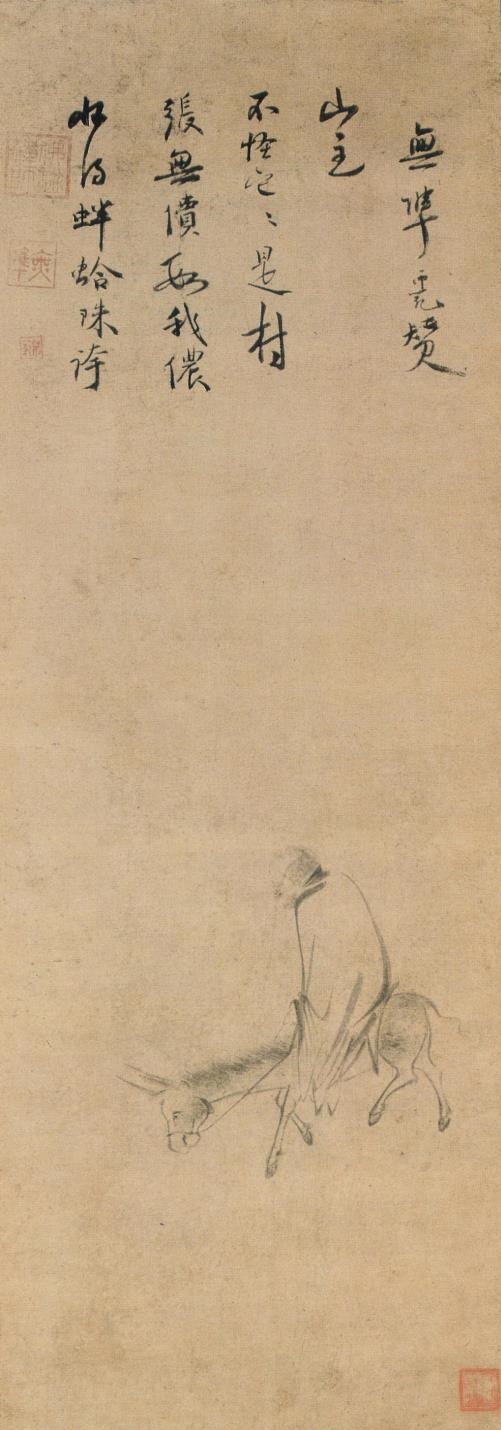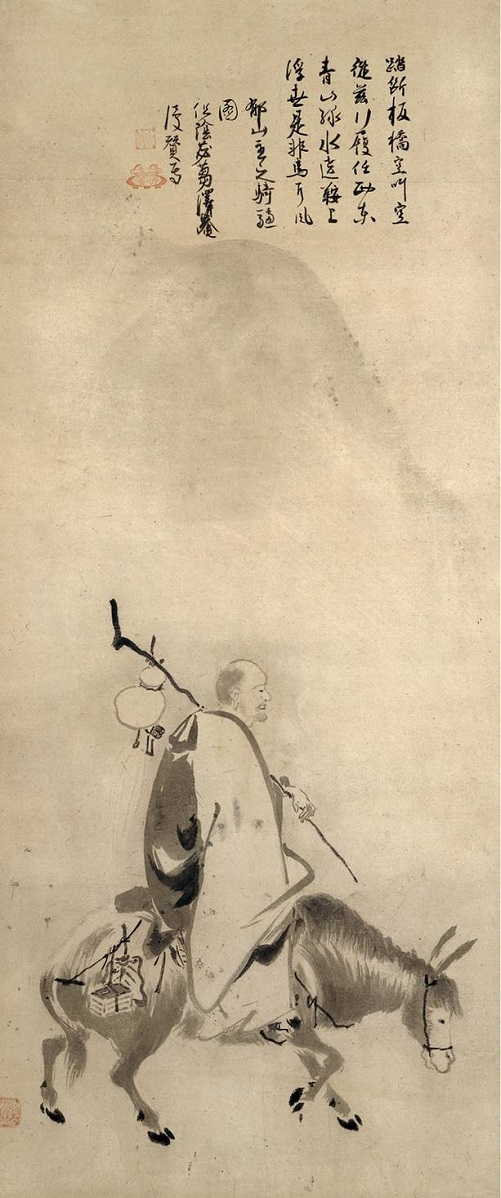ZEN MESTEREK ZEN MASTERS
« Zen főoldal
« vissza a Terebess Online nyitólapjára

郁山主 Yushanzhu (act. 11th century)
(Rōmaji:) Ikuzanshu
(English:) "The Master of Mount Yu"
The master of Ikusan worked on a koan - "How to proceed
forward from atop the hundred-foot pole? Uh!" - for three years,
when one day, as he was crossing a valley stream on a donkey, the
bridge plank broke and he fell, whereupon he was greatly en-
lightened. Atop the pole means at the peak of meditation, or
personal detachment and liberation, or it can be used to refer to the
farthest point of any aspect of work on the way. It usually refers,
however, to the esoteric death, after which the "step forward,"
return to life, at one with the world, is the beginning of the next,
usually more difficult, phase of Zen study.
(Thomas F. Cleary, in: The Original Face: An Anthology of Rinzai Zen, Grove Press, 1978. p. 68.)
PDF: Yushanzhu: Awakening Through a Blow to the Body
In: Narrative agency in thirteenth-fourteenth century Chan figure painting : a study of hagiography-iconography text-image relationships
by McNeill, Malcolm L. S.
Thesis (Ph.D.), SOAS University of London, 2017.
https://eprints.soas.ac.uk/24335/1/McNeill_4375.pdf pp. 159-170.
The earlier hagiography is found in the Collated Essentials of the Five Lamps (Wudeng Huiyuan 五燈會元 ): WDHY j.6, in: X.1565.80:137.
The second hagiography in which Yushanzhu is incorporated into a recognised lineage of Yangqi Fanghui 楊岐方會 (992-1049) found in the 1401 Supplementary Record of the Transmission of the Lamp (Xu Chuan deng Lu 續傳燈錄): XZDL j. 13, in: T.2077.51: 548, c7 - 24.

Master of the Beautiful Mountain (Yushanzhu) 郁山主圖
Attributed to Wuzhun Shifan 無準師範 (1178-1249) Before 1249, Southern Song (1127-1279)
Encomium by Wuzhun Shifan
Hanging scroll, ink on paper 84.1 x 30 cm
Tokugawa Art Museum, Nagoya
Important Work of Art
Encomium:
Obtaining the pearl of a clam,
Boasting of its incalculable value,
You and I do not find him strange,
He is the Master of the Mountain Villages.
Eulogised by Wuzhun Shifan.
收得蚌蛤珠,誇張無價數, 我儂不怪 它 , 它 是村山主。 無準師範贊。

Ikuzanshu (Ch. Yushanzhu, 郁山主) by 狩野内膳 Kano Naizen (1570–1616)
Inscribed by Takuan Sōhō (1573–1645)
Hanging scroll; ink on paper
111.8 x 47.4 cm
Donated to The Metropolitan Museum of Art, New York by the Mary and Jackson Burke Foundation in 2015
The poetic inscriptions, rendered in a crisp and brusquely brushed style, are by Takuan Sōhō, one of the most influential Zen monks of his day.
Having crossed the plank bridge again,
seeking emptiness in vain,
I embark on a journey
with no destination in mind.
Blue mountains and green waters
surround the mounted traveler,
as the rights and wrongs in the transient world
breeze past the horse's ears.
Painting of the Master of Mount Yu Riding a Donkey,
casually inscribed by Sokuin Hissū Takuan
—Trans. Shi-yee Liu

Ikuzanshu (Ch. Yushanzhu, 郁山主) by 狩野洞雲 Kano Tōun (1625–1694)
Hanging scroll; ink on paper
87 x 26.8 cm
Donated to the Minneapolis Institute of Art by the Mary and Jackson Burke Foundation in 2015
Painted in a few swift brushstrokes and deftly applied ink washes, Chan Master Riding a Mule exemplifies the freely expressive manner of Chan (Zen, in Japanese) Buddhist painting, which relies less on descriptive detail than on the capturing of spiritual concentration within the artist to achieve a vivid depiction. Inscribed by the noted Chan master Wuzhun Shifan (无准师范), to whom it traditionally has been attributed, the painting is probably the work of a contemporary Chan artist following the sketchy brush style of Liang Kai (梁楷).

Chan Master Riding a Donkey 騎驢圖
Anonymous Before 1249, Southern Song (1127-1279)
Encomium by Wuzhun Shifan 無準師範 (1178-1249)
Hanging scroll, ink on paper, 64.1 x 33 cm
Metropolitan Museum of Art, 1989.363.24
Wuzhun, well known for his wisdom as well as for his eccentric behavior, inscribed this painting while he was living at the Qingshansi, a Chan temple near Hangzhou, where he settled after he was rewarded by Emperor Lizong (r. 1225–1264) following an imperial audience. The rider's facial features-prominent forehead, mustache, and wispy beard-are not unlike those of Wuzhun himself, whose formal portrait, with an inscription by him dated 1238, is now in the Tofuku-ji temple in Kyoto. His laconic inscription may also be a self-deprecatory reference to himself:
Encomium:
As rain darkens the mountain, one mistakes a donkey for a horse.
Written by Monk Shifan of Jingshan.
雨來山暗,認驢為馬。徑山僧師範書 。